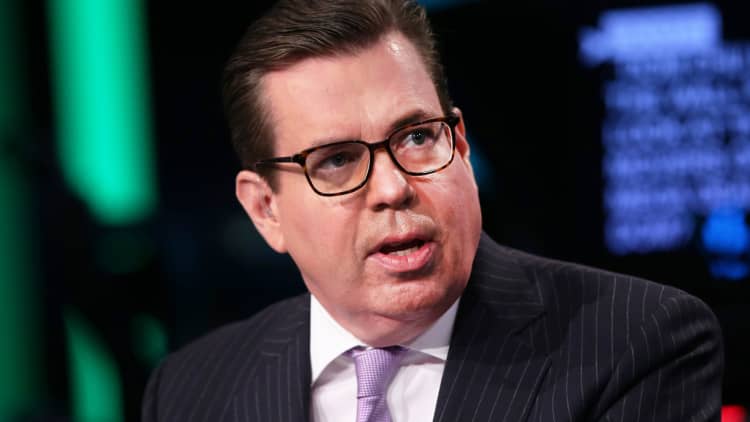
Today's oil price structure gives U.S. shale drillers another rock to fling at the market's goliath, OPEC, according to Jeff Currie, head of commodities research at Goldman Sachs.
U.S. companies that rely on expensive drilling methods have become more efficient, frustrating OPEC's two-year effort to end a crude glut by pumping at maximum capacity to wash out high-cost producers. Even after OPEC relented and cut its own production to balance the market this year, resurgent American output has helped push global crude stockpiles to historic highs.
That has kept U.S. oil prices in a band between about $44 and $55 a barrel. Currie believes prices won't break out until investors see "real, observable inventory draws."
While that's the stated goal of OPEC's deal with other exporters to remove a combined 1.8 million barrels a day from the market, Currie thinks the cartel has another aim in mind.
"The big shift — and what I think OPEC is trying to generate — is a shift in the curve to backwardation, where spot prices sit above forward prices," Currie told CNBC's "Power Lunch" on Wednesday.
U.S. crude oil price structure
OPEC wants oil for immediate delivery to trade at a premium to crude sold for future shipment because the current market structure — contango — benefits the cartel's competition.
In contango, today's oil prices are cheaper than prices in the future. That works somewhat in U.S. drillers' favor because they heavily hedge their production, Currie explained, meaning they lock in a future price for delivery.
"OPEC is too big to hedge, so they get the lower spot prices. What they're after is to flip that curve," he said.
OPEC meets next week to decide whether to extend its six-month deal to cut output. Currie said the market has largely priced in an extension through March 2018 floated by Saudi Arabia and Russia earlier this week.
Asked why oil hadn't rallied further on the growing consensus around rolling over the policy, Currie said, "The market has worn thin on patience."
"If you look at what's happened since the beginning of the year, [the market has] tried to trade the OPEC production cuts, the big draws in the U.S. inventories, and it got stung once in April and again in May," he said.
The market could be waiting a while for stockpiles to fall to the five-year average. On Tuesday, the International Energy Agency warned that OPEC might fail to drive down inventories to that level this year.

